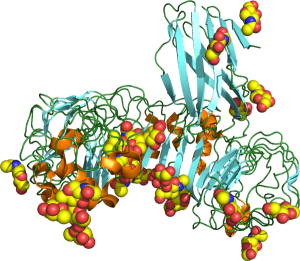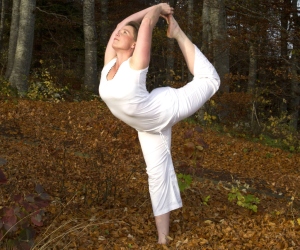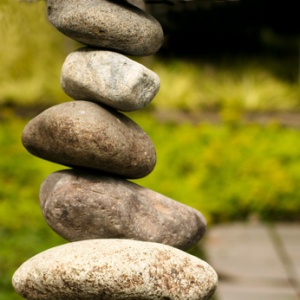 It’s been a 6 month hiatus since my last post. Many micro projects are in the works at the moment. It was time to re-focus on streamlining procedures to make time for writing and creating again. I’ve recruited some behind-the-scenes administrative support which has granted me some much needed breathing room with a little bonus moral support!
It’s been a 6 month hiatus since my last post. Many micro projects are in the works at the moment. It was time to re-focus on streamlining procedures to make time for writing and creating again. I’ve recruited some behind-the-scenes administrative support which has granted me some much needed breathing room with a little bonus moral support!
In the meantime I’ve been keeping only a casual presence on social media with Facebook (FB) groups in the areas of chiropractic and pain. These relaxed venues are a wonderful resource for me and I spend a great deal of time reading research this way and following professional debates about pain science within these groups.
The following post was originally geared towards practitioners because it was actually something I was preparing to post to a particular FB group. Half way through writing, I realized it’s much too long and in-depth for a post like that. It’s something that deserves wider readership and better scope (and may in fact need to be re-visited in the future.)
I have had concerns with the multidisciplinary discussions online about pain science
…and this week a patient helped me realize why.
My concern is specifically about how the rise in casual awareness of the bio-psycho-social (BPS) role in pain is affecting the way that non psychologically trained professionals handle the care of patients. An increasing number of practitioners are growing aware of the role of psychology and brain chemistry in pain…yet they are not trained appropriately about how to safely and effectively broach this topic with patients. They think that they can and should do so – based on the research. This is a mistake – a potentially harmful one.
Don’t get me wrong – the rising awareness about the connection between pain and the brain is wonderful progress. Increasingly the new supporting research is emerging online and at weekend seminars. It provides strong support for collaboration between healthcare disciplines. We are seeing that the answer to treating pain effectively is never solely via a mechanical fix (like with chiropractic, orthopedics or physical therapy.) It’s not exclusively a dietary issue and it’s not something you can counsel your way out of by talk-therapy alone either.
The problem occurs when practitioners without mental health care credentials, try to incorporate their casual knowledge into treatment. Without a deeper understanding of a patient’s emotional health history nor the training to safely handle someone’s full psychological burden, this ends up just being reckless and delusional behavior on the part of the practitioner.
A subtle boundary breach is serious
This week, my patient confided in me the reason she had to change physical therapy (PT) practitioners. She is someone who has a complex variety of PTSD and maybe some other combination of DSM-V diagnoses, but that is something I am not qualified to confirm. The point is she, like many patients, is more than meets the clinical-eye.
For her to trust a new practitioner involved numerous emotional hurdles. Under the care of this PT practitioner, as part of each visit, she found herself apparently continually pushed into the topic of deeper underlying psychological reasons for her current condition. This probing was coming at her from someone unqualified to appropriately recognize the precarious nature of what was being forced to the surface. Then, once having re-triggered trauma for this patient, this practitioner was ill-equipped to handle the fall-out.
My patient believes that after declining numerous times to engage in discussions of her private psycho-social history, this therapist continued to press her on it and belabor the point. While rightfully believing that this may play a role in the patient’s overall well-being – pain or no pain – it is EXTREMELY important to read your patients’ cues and realize that most people who seek the help of PTs OTs DCs LMPs LAcs are not giving consent- explicit nor implied – to discuss personal emotional matters.
What any of us healthcare providers need to do:
When we don’t get the response we’re looking for from patients – we all need to take the hint, just drop it and move on. Meet your patients where they are at. No one will benefit from being force-fed “insight” they are not ready for.
This patient who had to change PTs, did so – not because of a petty personality clash and not because of ineffective physical therapy, but because her emotional trauma was re-triggered and the PT’s probing was uninvited. Unfortunately this PT did not have the training, life experience nor the instinct to realize the gravity of what she was inflicting visit after visit. Any physical progress the patient could have made in regards to her pain was sabotaged.
It was no small feat to get this patient to reach out for treatment in the first place and this misstep could have been detrimental. Luckily she has a psychiatrist and is getting the right kind of support through this glitch.
This should serve as a word of caution to all of us. It’s tempting to want to put into practice the full breadth of what we know, but it’s not always appropriate nor welcomed.
Perhaps for the BPS / pain-science educators at large it’s also a reminder to teach with this in mind. Pain education when taught to professionals who are not adequately trained in mental health, absolutely must emphasize the importance of recognizing the need for referral to a qualified practitioner.
Practitioners: when thinking of putting your newfound knowledge to practice without extensive training, make sure that when sharing information about the psycho-social links to pain, that it’s done with kindness and not judgement. When coming from someone who is not trained in mental health, it must be done from one human to another, in conversation and without the pretense of power differential between therapist and patient.
Working with an integrative approach and developing a robust referral network is key. Please leave the formal psycho-social piece to the mental health professionals.
For the patients reading this: trust yourself.
Only you know what works for you and you know best what you’re ready for. Don’t let anyone guilt you or pressure you into overriding your instinct and comfort levels. If you feel emotionally violated or disrespected, there’s a reason for that. You deserve to be treated with respect. If you do your best to communicate your boundaries, then you deserve to have those respected. Sometimes when others trigger us, whether that’s in a therapeutic relationship or not, it’s an important signal that we have some work to do within and remember, no one intends to be unkind or disrespectful.
We are all imperfect and trying to figure things out and doing the best we can, but that doesn’t mean you should tolerate anything that makes you uncomfortable. Your boundaries and limits don’t have to be the same as someone else’s.
If you are working with a PT, OT, DC, MD, LAc, LMP or anyone else in a therapeutic capacity, and he or she is pushing you to either talk about something that you don’t want to talk about, or making you do something that feels uncomfortable – let them know that you are not okay with it. It doesn’t matter if this seems like something you “should” be okay with or others would normally be okay with. That’s irrelevant when it comes to your well-being.
Too often patients/ clients abdicate their power and autonomy with the idea that the therapist/doctor/professional “knows best”. That may work for some people but it only works because there is awareness and consent. If you feel emotionally or physically uneasy and you’re not explicitly consenting to have your boundaries pushed, either speak up or move on. Communicate your needs or find someone who will work with you on your goals in a way that feels respectful of your comfort zones.
Anyone worth their salt will happily hear your concerns and adjust their approach accordingly.
Image Credit: Wikimedia Commons By Pieter Brueghel the Elder –







 My writing relies heavily on the hard research work of people like these and I am so happy not to have to be the one to produce it. I have the utmost regard for the kind of mind it takes to do that sort of work. I, on the other hand, much prefer bringing the information to real people for whom it has practical application in a way that makes sense to them individually.
My writing relies heavily on the hard research work of people like these and I am so happy not to have to be the one to produce it. I have the utmost regard for the kind of mind it takes to do that sort of work. I, on the other hand, much prefer bringing the information to real people for whom it has practical application in a way that makes sense to them individually. What I love about this particular body of pain research presented by the NOI group, is the neuro-biology of it. While sitting in the conference and happily soaking up the neurological terminology familiar to me, I wondered how well the basic physical therapy education covers neurology in the US. Chiropractors get extensive exposure to neurology with increasing detail through the progression of the 5000+ hours of doctoral level curriculum. It appears that Australian physiotherapy schooling also includes a fair amount of neuro-physiology training. As I looked about the room at the blank stares, I wondered if perhaps the American PT curriculum isn’t quite as rigorous in this area until perhaps the elective doctoral level? Something for the NOI instructors to perhaps become aware of.
What I love about this particular body of pain research presented by the NOI group, is the neuro-biology of it. While sitting in the conference and happily soaking up the neurological terminology familiar to me, I wondered how well the basic physical therapy education covers neurology in the US. Chiropractors get extensive exposure to neurology with increasing detail through the progression of the 5000+ hours of doctoral level curriculum. It appears that Australian physiotherapy schooling also includes a fair amount of neuro-physiology training. As I looked about the room at the blank stares, I wondered if perhaps the American PT curriculum isn’t quite as rigorous in this area until perhaps the elective doctoral level? Something for the NOI instructors to perhaps become aware of. What tickles me about the NOI group research – at least as presented by the neuro-literate educator of the group – is that it is finally providing scientific evidence of things that we all as humans at some level already know. Life experiences affect our relationships with pain.
What tickles me about the NOI group research – at least as presented by the neuro-literate educator of the group – is that it is finally providing scientific evidence of things that we all as humans at some level already know. Life experiences affect our relationships with pain. The most lovely thing about these three clinical research masterminds is that they have uncovered and provided the science and research behind the validation needed to implement this pain education. The NOI group seems to be working to educate more clinical educators which is truly going to the source to effect change and I applaud that.
The most lovely thing about these three clinical research masterminds is that they have uncovered and provided the science and research behind the validation needed to implement this pain education. The NOI group seems to be working to educate more clinical educators which is truly going to the source to effect change and I applaud that. I learned that it was primarily a few local larger medical institutions that brought this conference to their employees by virtue of allotted benefit dollars that provide them with reimbursement for continuing education. The cost of the conference was unfortunately prohibitive to anyone not affiliated with an organization with deep pockets.
I learned that it was primarily a few local larger medical institutions that brought this conference to their employees by virtue of allotted benefit dollars that provide them with reimbursement for continuing education. The cost of the conference was unfortunately prohibitive to anyone not affiliated with an organization with deep pockets.


















